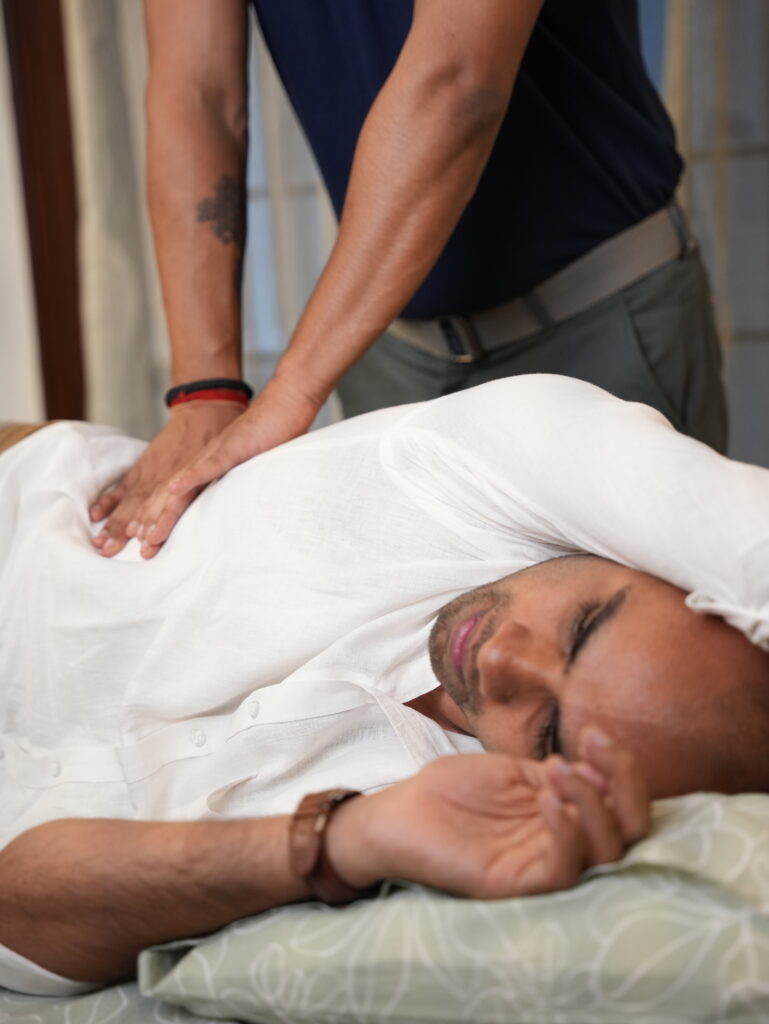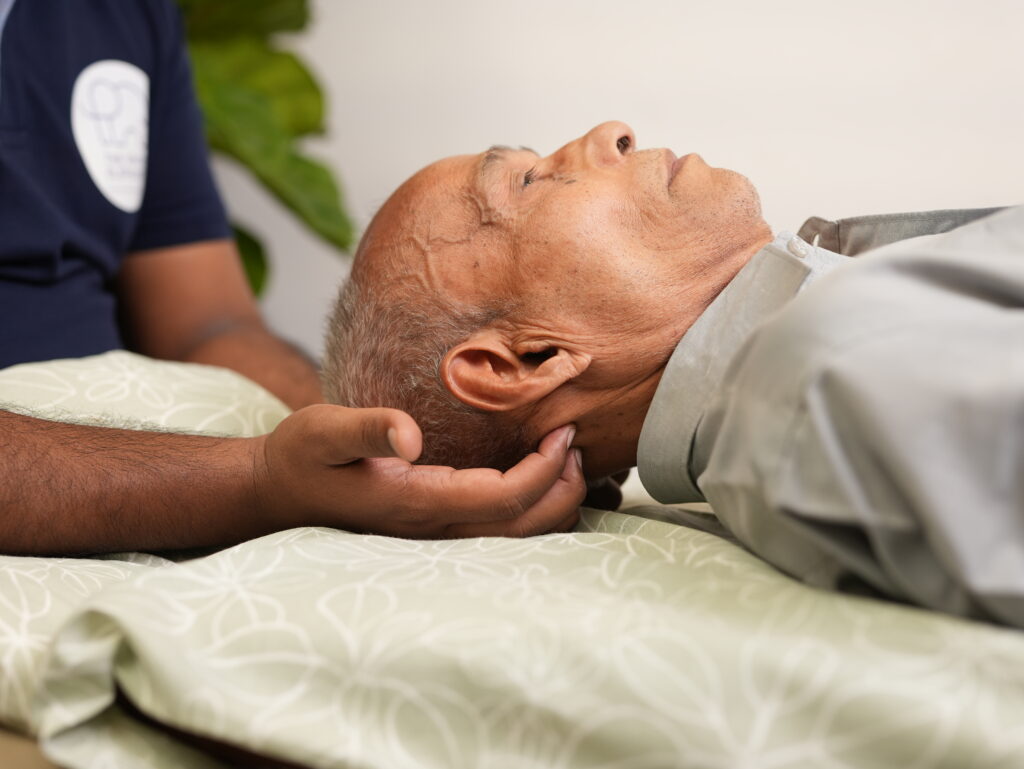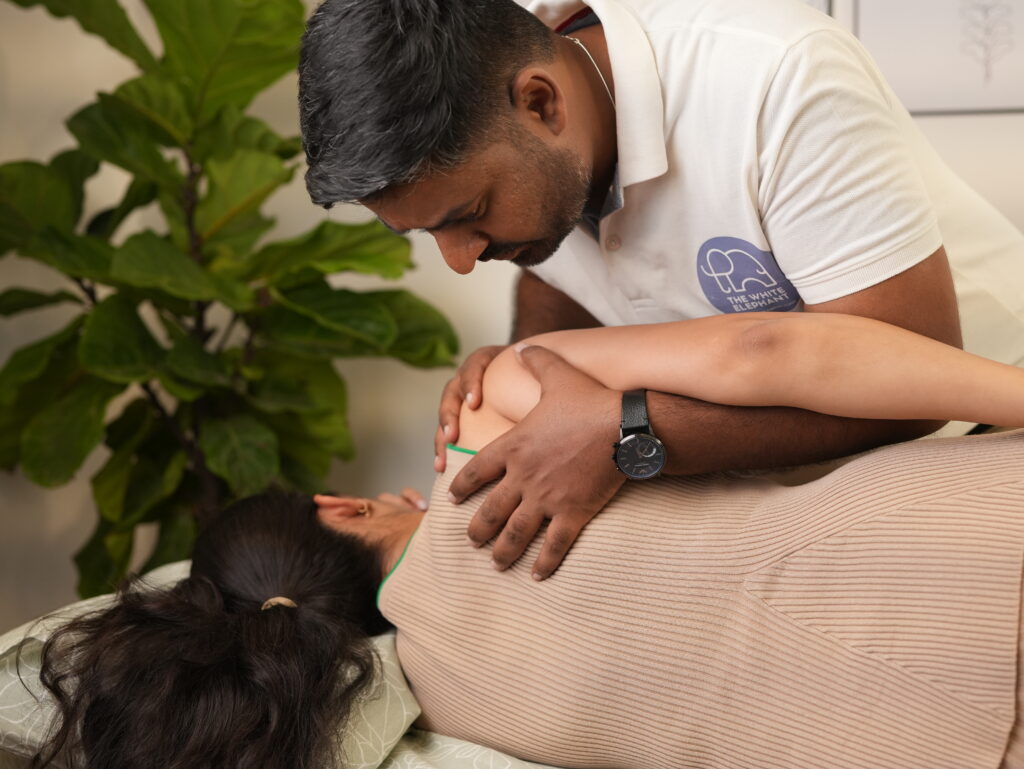Introduction
Millions of people over the world suffer from migraines. These excruciating headaches can cause extreme discomfort, light and sound sensitivity, nausea, and other unpleasant symptoms for hours or even days at a time. While there are many migraine therapies available, osteopathic medicine offers an integrated approach that emphasises on treating the underlying causes of the condition.
This blog post will discuss the benefits of craniosacral therapy, cervical spine manipulation, and visceral organ mobilization for migraine treatment.
Etiology of Migraine
A complicated neurological disorder called migraines affects blood flow, inflammation, and nerve activity. Numerous reasons, such as stress, hormone fluctuations, food decisions, and environmental circumstances, frequently cause them. Together with the pain, nausea, vomiting, and visual abnormalities are common side effects of migraines.
Role of Visceral Organs Mobilisations

In osteopathy, a method known as visceral organ mobilization entails gently manipulating internal organs, including the diaphragm and the gut. This approach intends to improve these organs’ movement and functionality, which may be a factor in migraine symptoms. For example, referred pain in the head and neck may result from stomach problems or diaphragm constraints. Osteopathic treatment can help reduce migraine triggers by treating these problems.
Dr. Bruno Chikly, an osteopath, has conducted extensive research on visceral manipulation. He explains how the technique can improve organ function and help alleviate conditions like migraines by restoring balance in the body’s various systems. Chikly’s work highlights the importance of addressing underlying issues rather than just managing symptoms.
Benefit of Cervical spine Manipulation in Migraine

Tension and pain in the neck are common among people with migraines, and they can make their headaches worse. Gentle manipulation and stretching of the neck and associated soft tissues are key components of osteopathic treatments for releasing the cervical and neck structures. These methods work to foster relaxation and reduce muscle tension by improving blood and cerebrospinal fluid circulation in the region of the head and neck.
Studies have shown that osteopathic treatment can significantly reduce the frequency and intensity of migraines by addressing neck and cervical issues. By improving the mobility and alignment of the cervical spine, osteopathy helps alleviate the structural and mechanical factors that contribute to migraine pain.
CranioSacral Therapy’s Role in Migraine

The gentle, hands-on method known as craniosacral therapy aims to ease the stress and constraints. The meninges—membranes encircling the brain and spinal cord—the cerebrospinal fluid, and the bones of the skull and sacrum make up the craniosacral system. skillfully moving and manipulating the body allows for the body’s natural healing capabilities and support in the craniosacral system’s restoring of balance.
Biodynamic Craniosacral Therapy takes the principles of CST a step further by emphasizing the importance of the body’s inherent wisdom and self-regulating capacity. In the biodynamic approach, the therapist focuses on listening to the client’s body and facilitating the release of tension in a more subtle and holistic way.
Conclusion
In conclusion, migraines can severely affect one’s quality of life, but osteopathy presents a holistic solution that targets the underlying causes of these headaches. By addressing these root issues, osteopathy not only alleviates migraine symptoms but also enhances overall well-being. This approach offers a comprehensive and effective method for managing migraines and improving the overall quality of life for those affected by this condition.
References:
1. Chikly, B. (2015). The Holistic Body: Osteopathy and Basic Sciences. International Journal of Therapeutic Massage & Bodywork, 8(3), 3–10.
2. King, H. H., Tettambel, M. A., & Lockwood, M. D. (2018). Cerebrovascular Hemodynamics During a Craniosacral Therapy Technique. Journal of the American Osteopathic Association, 118(9), 576–582.
3. Chaibi, A., Šaltytė Benth, J., & Tuchin, P. J. (2011). A Randomized Controlled Trial of Osteopathic Manipulative Treatment Following Cervical Total Disk Replacement. European Journal of Pain, 15(2), 141–148.
